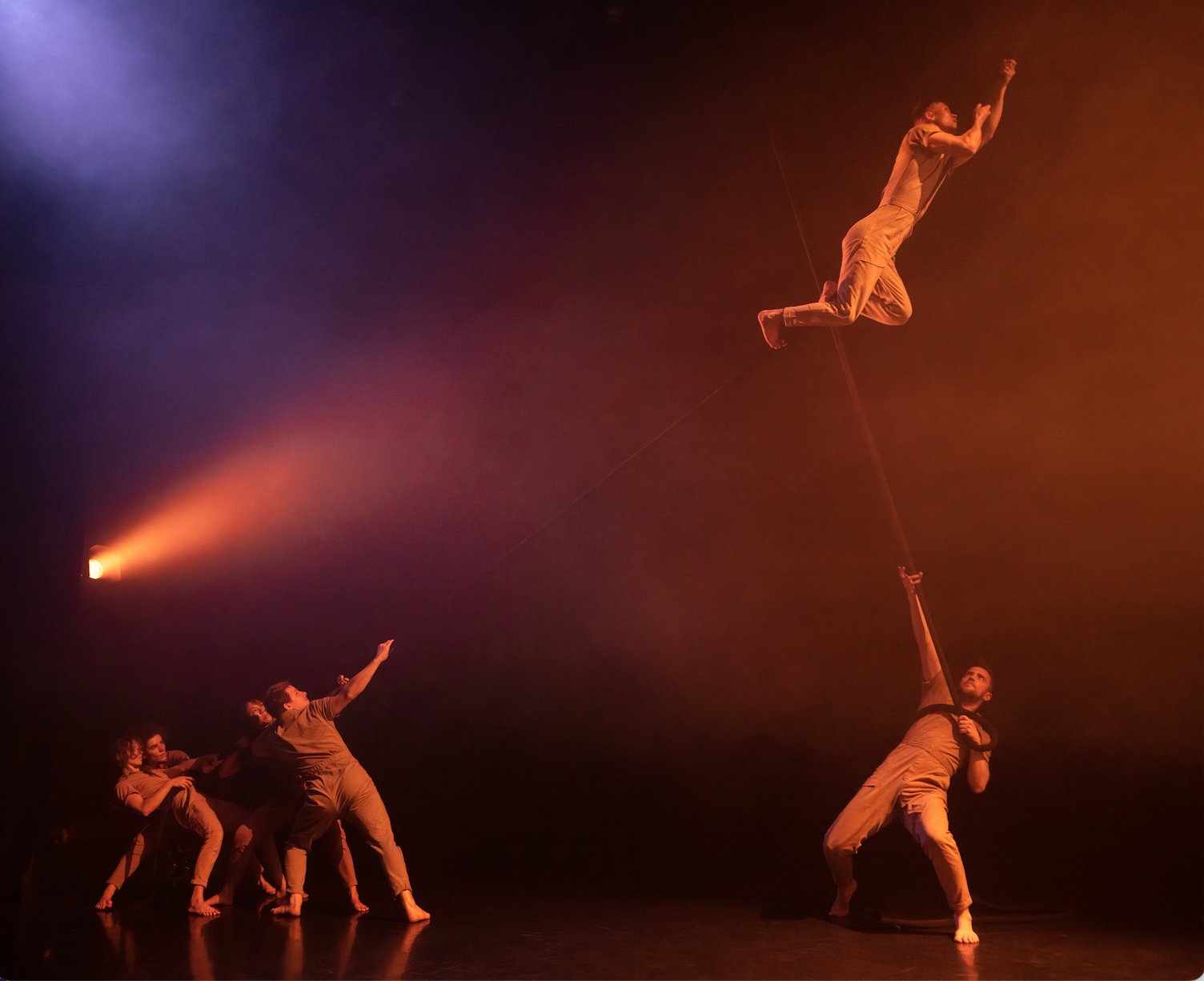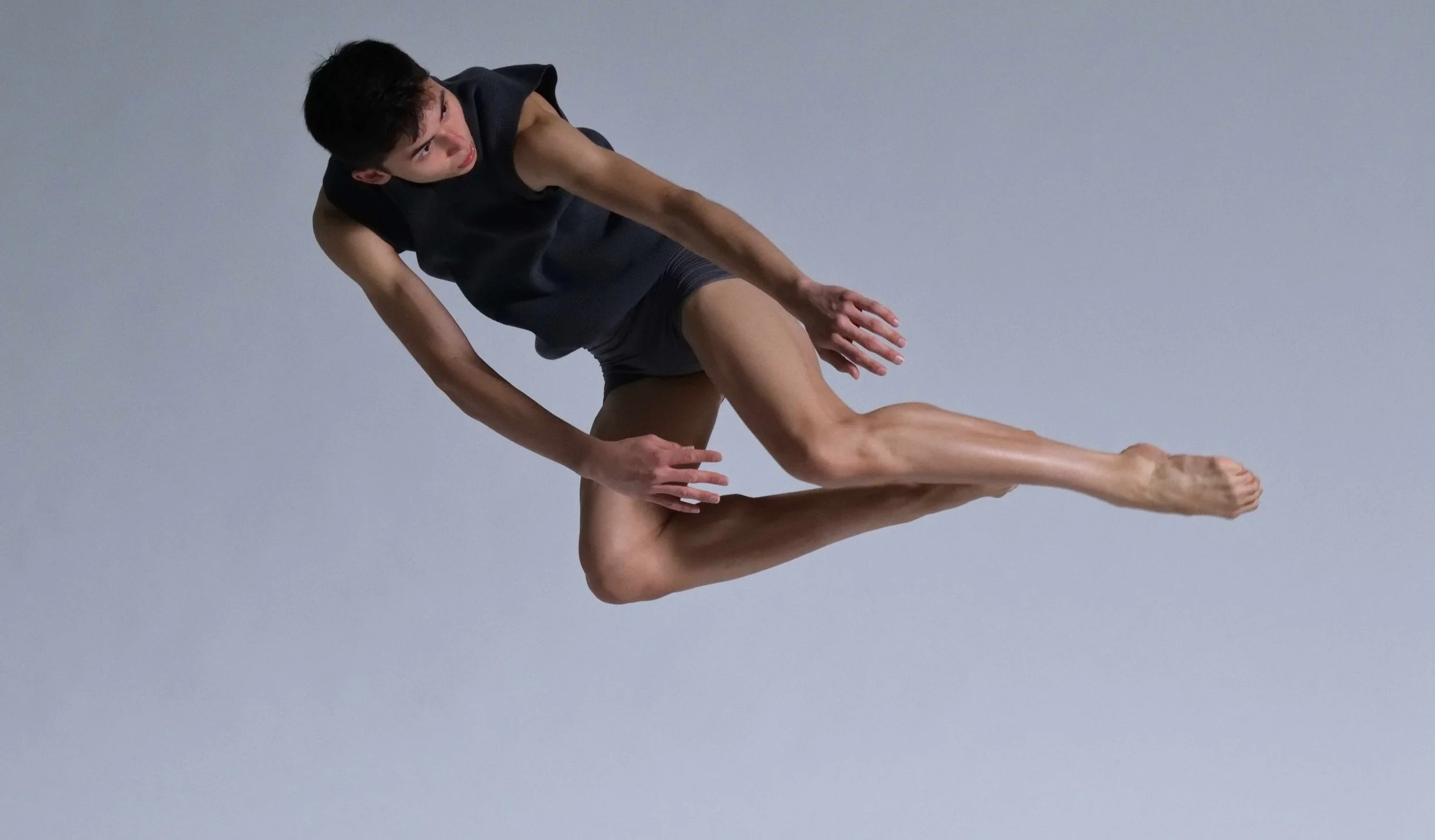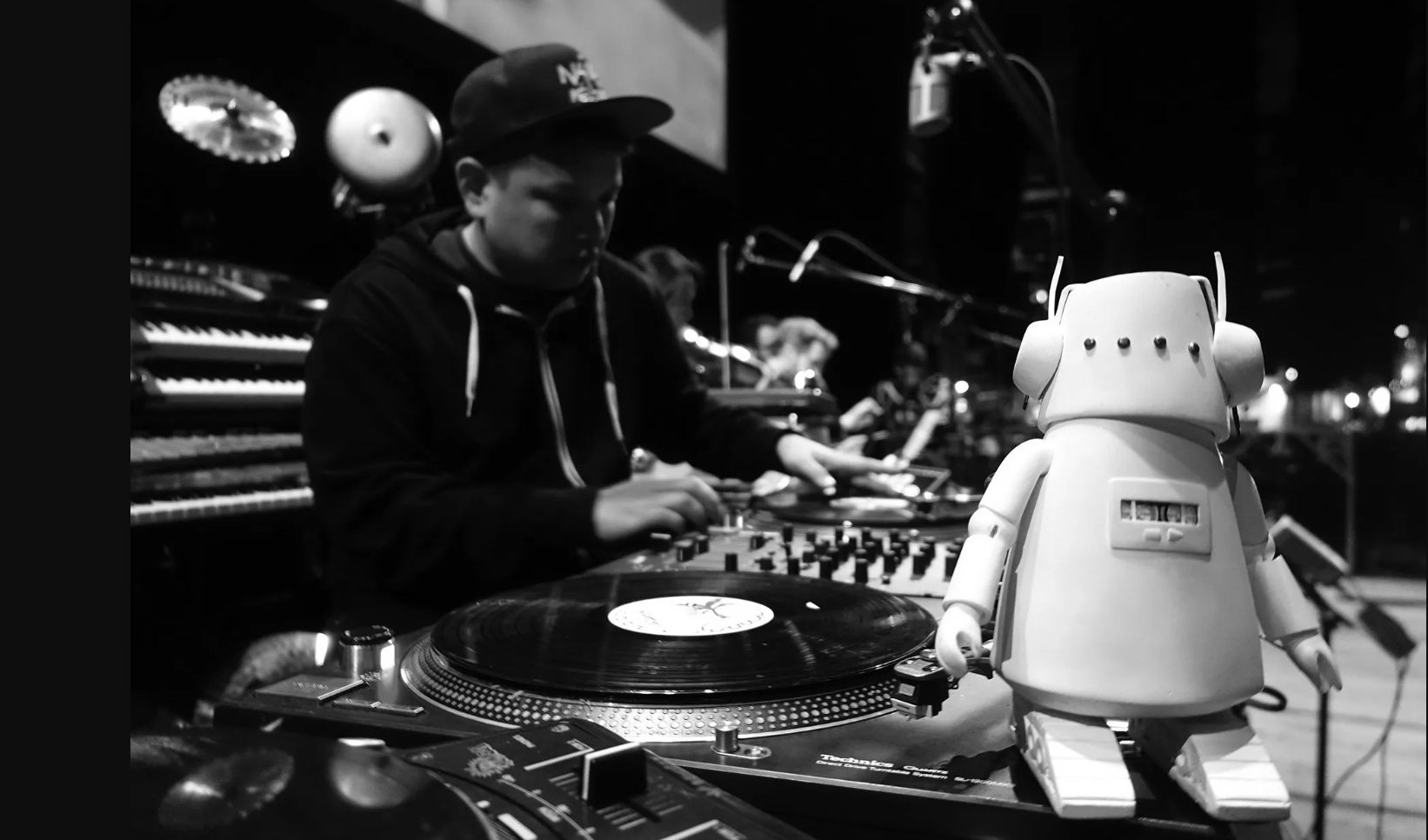Dance review: Through emotion and aerial movement, Throe throbs with a sense of yearning
Performance company Corporeal Imago’s Gabrielle Martin and Jeremiah Hughes bring a fresh new choreographic language to Vancouver with their new ensemble piece
Throe. Photo by Chris Randle.
The Dance Centre presents Throe to November 19 at 8 pm at Scotiabank Dance Centre as part of The Dance Centre’s Global Dance Connections series; post-show artist talk-back takes place on November 18
IN AN EERIE fog otherwise surrounded by darkness, three dancers each climb up a thick black rope that seems to hang from the sky then twist their bodies high up in the air, winding up suspended, face down and folded at the waist, dangling like limp rag dolls. This is just one of countless striking images in Throe, now having its world premiere, by Vancouver performance company Corporeal Imago.
By combining their training and expertise in aerial movement and contemporary dance and infusing it all with emotion, Gabrielle Martin and Jeremiah Hughes have created a fresh choreographic language all their own. It’s spellbinding.
The partners in art and life met while performing with Cirque du Soleil, and they’ve transferred their knowledge of aerial rope work to this ensemble of six local dancers: Marissa Wong, Brenna Metzmeier, Isak Enquist, Jeremiah Hughes, Alex Tam, and Eowynn Enquist. At times, the performers ascend the ropes solo, pausing up top to run in mid-air or bend one leg backward, it becoming a propellor as they begin to spin. At others they pair up, intertwining their limbs or folding their bodies over each other’s in a kind of gravity-defying game of Twister. Elsewhere, five of the artists line up on the floor, as if getting ready for tug-of-war, to hold a single rope taut at a 45-degree angle as another, sharply focused, slowly but surely makes his way up it. It’s as if he’s reaching for the very gates of heaven, or perhaps making his way out of hell, with everything in the balance.
Not all of the movement takes place several feet above the stage; much of it is on the floor, though the ropes play a major role here too, dancers grasping them as they travel and tumble across it. The choreographers’ circus training shows up here as well, with the artists curling into shoulder stands or churning out cartwheels, albeit warped ones.
Whether the dancers are firmly planted on the ground or swivelling skyward, they exude the work’s overall tone: there’s a sense of yearning, of searching, throughout. An uneasiness pervades their every move, even when they manage to imbue their fierce physicality with a certain softness. Often, they seem to be lost, their hands ever desperately reaching for or trying to hold on to someone.
Dramatically accentuating this combination of anxiety, vulnerability, and longing is Jo Hirabayashi’s score. It begins before the show has even started, a deep, foghornlike sound punctuating the theatre in short notes. The soundscape builds in intensity, sometimes hollow and echoey as if coming from inside a giant tube, at others tinged with industrial clangs. It envelops you, and it’s awesome.
Sophie Tang’s lighting design is equally powerful. There’s a striking scene where a red searchlight travels from one side of the stage to the other and comes around again, circling like a lighthouse would; another memorable image comes when Tang illuminates a sole dancer in a bright shaft of white light; otherwise surrounded by pure darkness, he might as well be making his way to another galaxy.













